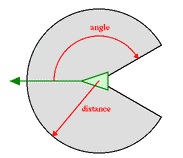During my research on Google Scholar, I came upon the following journal article called “The Electric Guitar: An Augmented Instrument and a Tool for Musical Composition”. I found the content of this article highly inspiring since it deals with the history of sonic augmentation of the electric guitar and is thus also highly relevant for my project (which, of course, also seeks to extend the range of sound possibilities of an electric guitar).
According to Lähdeoja, Navarret, Quintans and Sedes, the electric guitar can be considered a highly augmented instrument in itself since it is basically an acoustic guitar whose sonic possibilities were and still are extended by electromechanical and digital means. Obviously, at the beginning of the electric guitar stands the acoustic guitar since – as far as the basic physical qualities are concerned – an electric guitar is very much based upon an acoustic: (physical) features such as metallic strings, a glued or screwed neck, strengthened with a truss rod, tone woods (maple or mahogany necks with a maple, rosewood or ebony fingerboard) as well as metallic frets and a chromatic scale were all transferred from the acoustic onto the electric guitar. However, with the invention of the solid body a new era began, introducing a major extension of sonic capabilities through electric technologies of amplification. With an electric guitar, the actual sound source of the acoustic guitar becomes part of an electro-acoustic chain that additionally comprises a range of analog and/or digital modules that are necessary for producing sound, thus giving the electric guitar a modular property. Of course, the electrification of the guitar sparked a whole new way of thinking and creating sounds, leading to the development of new playing techniques.
While “the electrification of the guitar is probably the most important modification the instrument has undergone in the twentieth century”, the instrument and its sound possibilities continued to be intensely advanced in the following decades, with the developments driven by guitarists, instrument makers and the requirements of different musical styles. The afore mentioned modularity of the electric guitar that includes the selection of tone woods, pick-ups, amplifiers, effect chains, etc. provides the guitarist/musician with a lot of freedom as far as customizability is concerned. However, it is the case with every instrument that along with the increase of sonic possibilities and corresponding control interfaces, playing the instrument gets more and more complex as well, potentially overburdening the musician’s (physical) capabilities. In order to avoid the latter, most control interfaces for electric guitar have been conceived with simplicity in mind, featuring relatively simple controls and traditionally being conveniently placed within the guitarist’s reach (e.g. an effect pedal that is (dis)activated by stepping on it). While serving its purpose of not overburdening the player, Lähdeoja, Navarret, Quintans and Sedes observe that this approach limits the possibilities for dynamic, real-time interaction with controls which leads to a status they describe as the “sonic stasis common in electric guitar playing: the player chooses a specific sound for a musical part with “on/off” effect switches, playing with the same timbre until the next “monolithic” modification”.
I think this latter notion is very interesting because it justifies my quest to identify ways of extending the sonic range of an electric guitar using only the natural movements of the player as an input source for effects. While the article states that there is currently research being done on this topic, I think that I can still add to the current research with my project and its outcomes.
Source:
Lähdeoja O., Navarret B., Quintans S., Sedes A. (2010). The Electric Guitar: An Augmented Instrument and a Tool for Musical Composition. Journal of Interdisciplinary Music Studies, 4(2), 37-54. 10.4407/jims.2010.11.003

